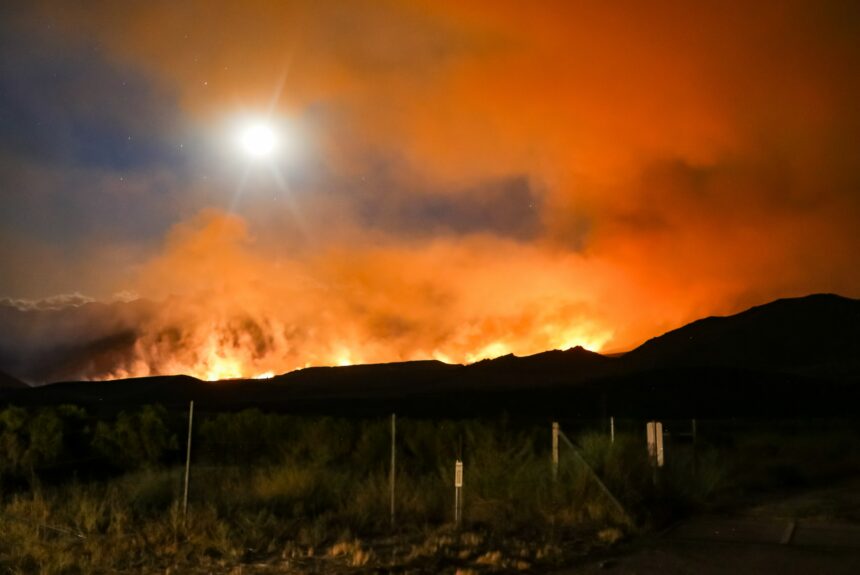Why are wildfires getting worse? Regulations are partially to blame, according to a new report.
In a recently released policy brief, authors Eric Edwards and Sara Sutherland of the Property and Environmental Research Center (PERC) outline how inefficient regulations and permitting processes exacerbate the risk of wildfires.
>>>READ: Prioritize Forest Management to Reduce Wildfire Risk
Wildfires are devastating to communities, especially in the western United States. They can destroy homes, businesses, and regrettably result in loss of life. Wildfires are also one of the first things that come to mind when discussing the negative impacts of climate change. Importantly, wildfires can set us back from achieving emissions targets. In 2021 more than 1.7 billion tons of CO2 were emitted from wildfires, more than twice as much as Germany’s total annual emissions for that year.
A majority of the tragic wildfires in the U.S. occur in the west. This is important because, as the report points out, “More than half of the land in the 11 contiguous western states is federally owned and managed…Of the 640 million acres of federal land in the United States, the Forest Service manages 193 million. In 2020, 7.1 million acres of federal land burned in wildfires, including 4.8 million acres of Forest Service land.”
To combat the growing number of wildfires, the U.S. Forest Service has outlined a goal to treat 20 million acres in the next ten years. While a noble objective, PERC points out that 80 million acres of U.S. Forest Land are in need of restoration. The biggest obstacle to reaching these goals? Environmental reviews.
According to Edwards’ and Sutherland’s findings, environmental regulations are, ironically, negatively impacting the environment, the primary culprit being the National Environmental Policy Act (NEPA). While NEPA-caused delays, which C3 has covered extensively, are often associated with energy and infrastructure projects, the law also slows down key forest management projects such as mechanical thinning and prescribed burns.
>>>READ: Fighting Fire with Wildfire Prevention
As the authors note, “Once the Forest Service initiates the environmental review process, it takes an average of 3.6 years to begin a mechanical treatment and 4.7 years to begin a prescribed burn. For projects that require environmental impact statements—the most rigorous form of review—the time from initiation to implementation averages 5.3 years for mechanical treatments and 7.2 years for prescribed burns.”
Incorporating these active forest management measures can make all the difference for communities that are in high-risk areas. As the PERC report states:
The effectiveness of these measures was demonstrated in 2021 during Oregon’s Bootleg Fire, which ultimately burned 400,000 acres. Firefighters reported that where both treatments had been applied, fire intensity was reduced, the crowns of trees were left intact, and the blaze became a more manageable ground fire. Such low-intensity fires, which frequently burned in the West before aggressive fire suppression policies were adopted, are ecologically important. Managed forests are more resilient to drought, high temperatures, fire, and insects.
NEPA-caused delays are exacerbated by the current funding of the Forest Service. The federal government provides the Forest Service with a blank check for forest fire response, rather than focusing on fixing the systemic problems that allow for more prevention. Additionally, Forest Service conservation programs are funded by the Congressional appropriations cycle, making it impossible for the Forest Service to commit to projects long-term. Modernizing NEPA and addressing funding challenges could be extremely impactful in minimizing the size and intensity of wildfires and therefore reducing the risk to communities.
Read the full report from PERC here. You can also read the forest management chapter of C3’s Climate and Freedom Agenda, which includes many recommendations from PERC, here.
The views and opinions expressed are those of the author’s and do not necessarily reflect the official policy or position of C3.
